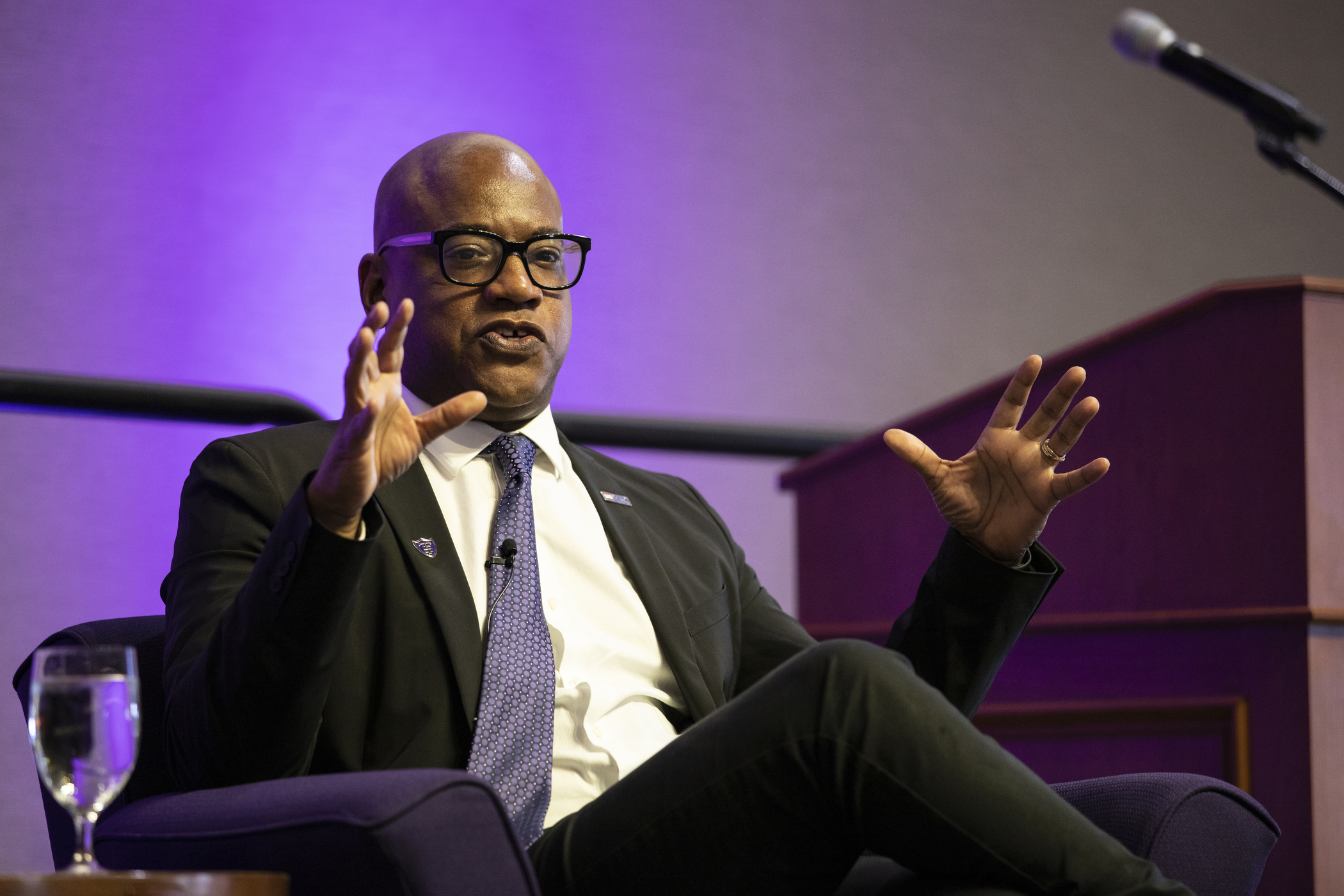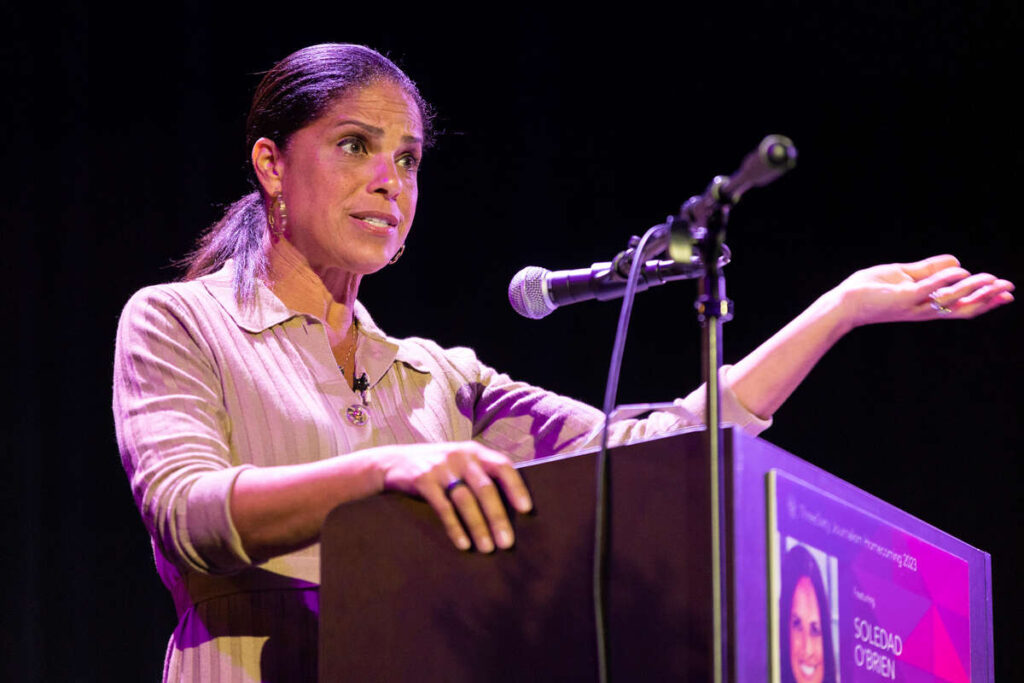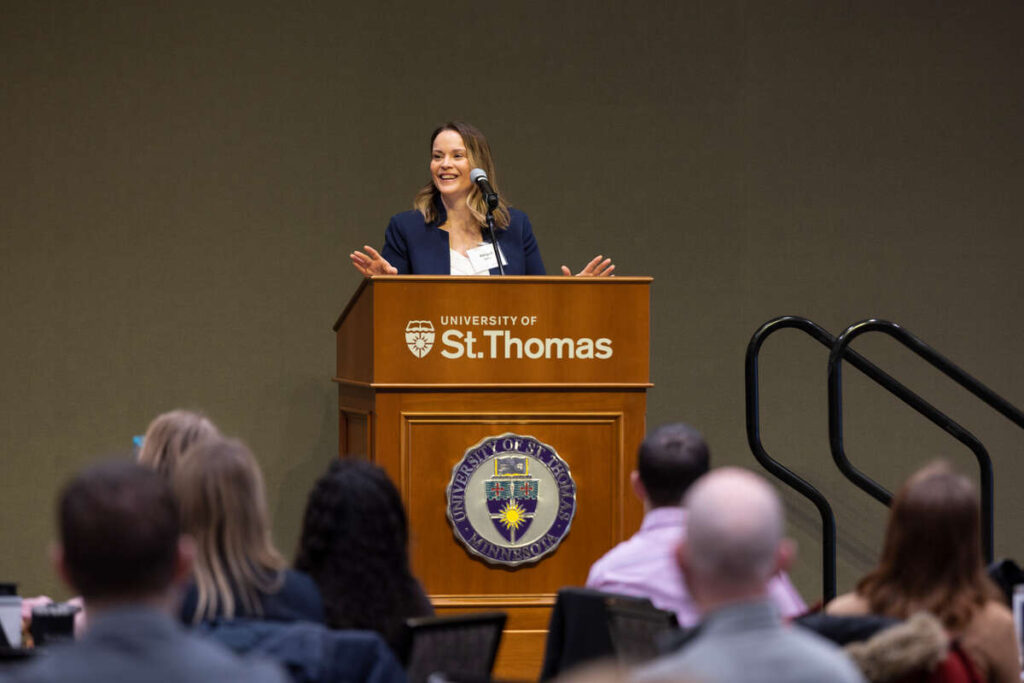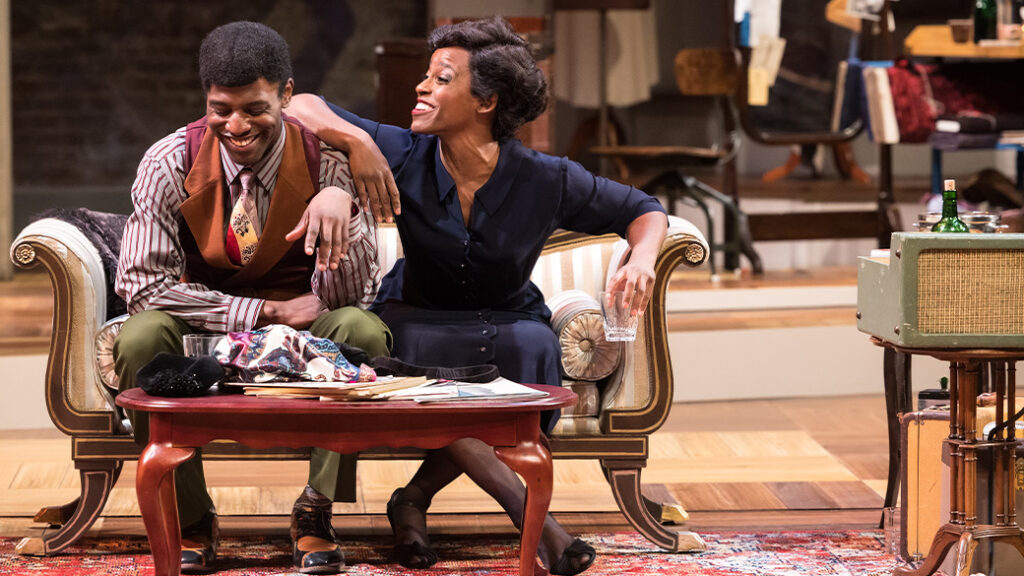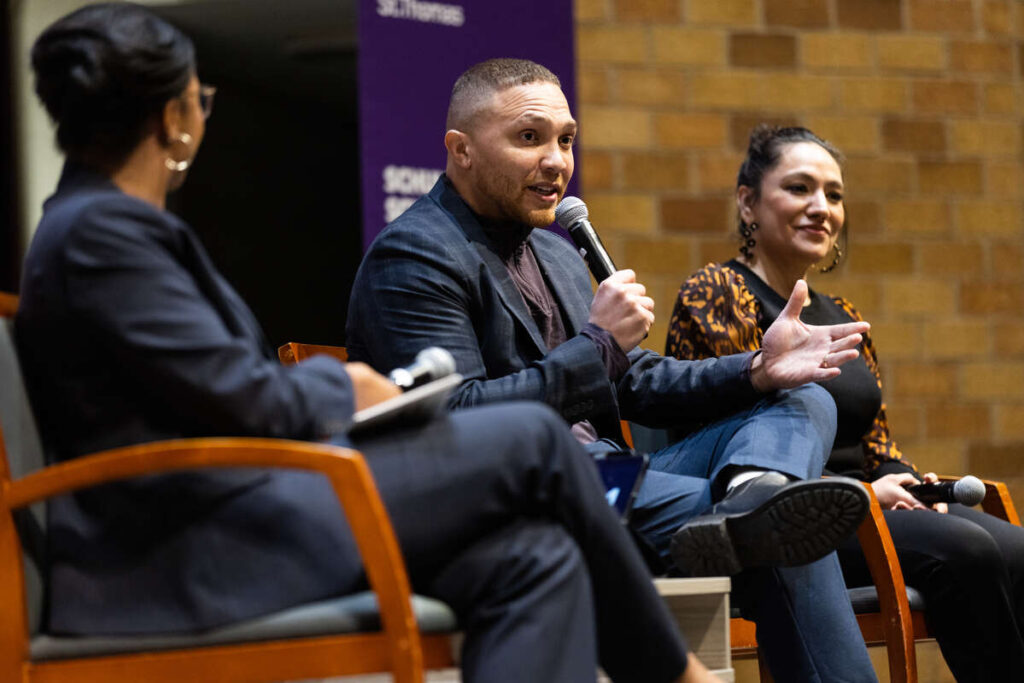To begin the 29th annual St. Thomas Alumni Association First Friday Speaker Series, Greg Cunningham, U.S. Bank senior vice president and chief diversity officer, spoke on Oct. 4 about workplace culture in terms of inclusion and intentionality.
Cunningham’s motto, “I bring life to brands,” outlines his empowering conversation with the luncheon’s host, Dougherty Family College Dean Alvin Abraham. Here are five observations from the talk.
1. Diversity is the expression of your life experiences.
Born in Pittsburgh, Cunningham grew up with parents who held a strong work ethic.
He experienced firsthand the effects of the civil rights movement when his father’s butcher shop was burned to the ground in 1968. “I remember my dad leaving and going to work every day. He came home from work one time and all of our stuff was in the front yard. My mom said, ‘We’re moving out of here, it’s crazy,’” he said.
“My journey led to my mom deciding to emphasize education for me. My mom put me in a private Catholic school in Pittsburgh and I ended up going to a historically black college. All of those experiences shaped how I define diversity. … I believe [diversity is] shaped by our life experiences, meaning you can evolve your skills around diversity and inclusion,” Cunningham said.
2. Leadership is about mobilizing people and resources around ideas.
Quoting Martin Luther King Jr.’s “Letter from Birmingham Jail,” Cunningham said, “We are brought together by this inescapable web, tied to a single destiny. You can’t be all that you ought to be until I am everything that I can be.”
This, he elaborated, “is what most companies don’t understand.” Cunningham said sharing human experiences - and changing behavior to mobilize people around ideas - are essential to creating a healthy work environment.
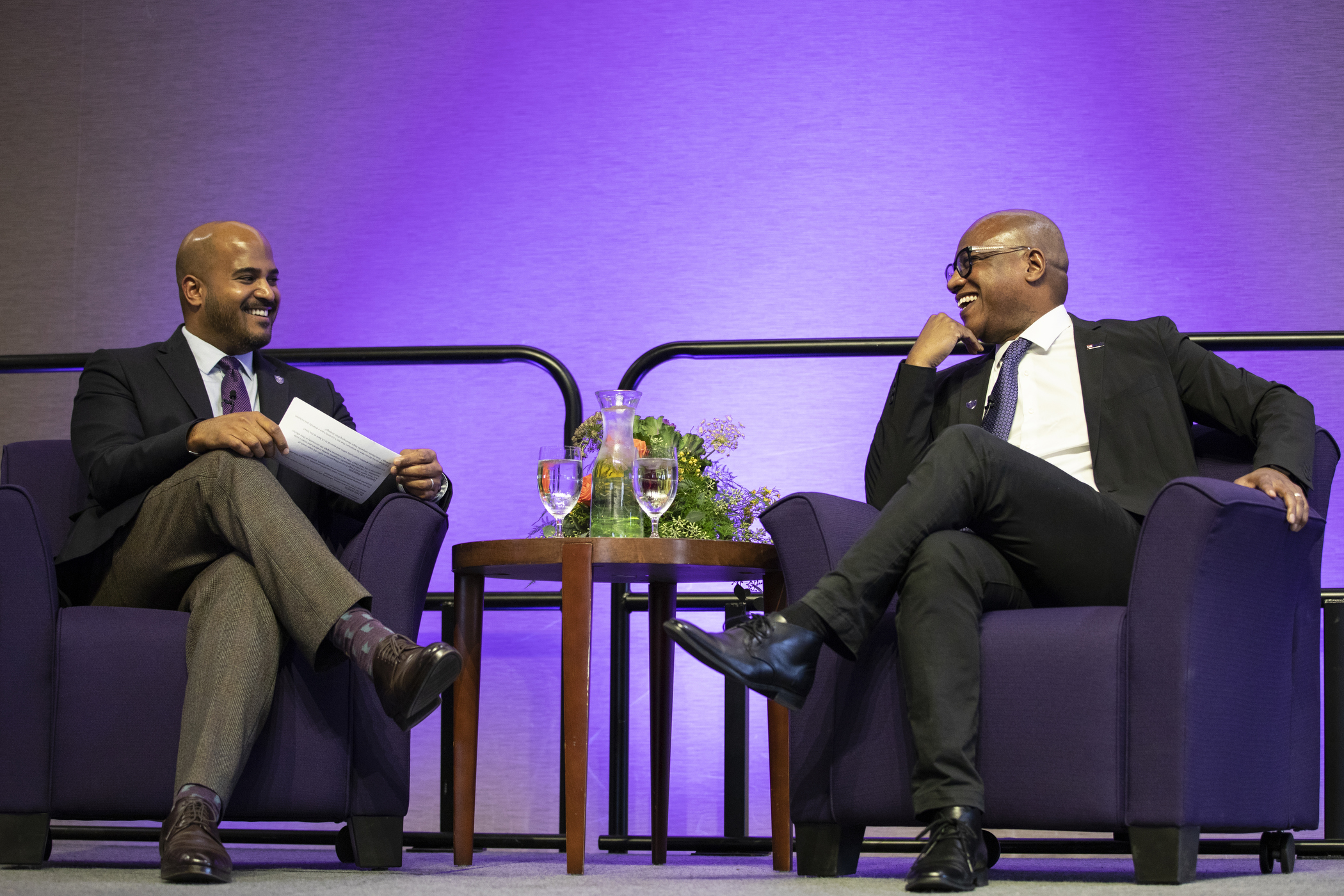
Dougherty Family College Dean Alvin Abraham interviews Greg Cunningham, U.S. Bank Senior Vice President and Chief Diversity Officer. (Liam Doyle/University of St. Thomas)
“I try to meet people where they are. I don’t expect everybody to share my perspective on diversity or inclusion or what that means," he said. "But what I do expect is that we can appreciate each other’s life experience and have a conversation and try to find some understanding around a common objective ... how we move together despite difference.”
3. Creating a diverse workforce begins with mirrors and windows.
To analogize the technique of building a diverse workforce, Cunningham said, “What people want is when you look at an organization, you want to see yourself reflected in the organization.” Regarding the window element, Cunningham believes it is necessary for the labor force to ask themselves, “Is it possible for me to thrive and grow?”
“We have made diversity, equity, and inclusion a part of the leadership expectation [at U.S. Bank],” he said. Cunningham mentioned that U.S. Bank purposefully gives out a performance review with seven values that the employee must demonstrate – many of them revolving around diversity.
“Every business line has a diversity and inclusion scorecard at U.S. Bank. This is how we are going to grow our business,” he said.
4. We need more Tiger Woods-es.
Further commenting on why diversity, equity and inclusion is critical in organizations, Cunningham mentioned golf. “Golf is a good sport. People enjoy playing it. When Tiger Woods came along, it exploded the sport. It became this phenomenon. It opened the door and more diverse people wanted to play. There was a time Tiger Woods couldn’t even play on those courses. There was a time he couldn’t play Augusta National (Golf Club) because of his skin color,” he said. Turning to the audience he chuckled, “Imagine if they they never let Tiger Woods play golf.”
Bringing the analogy full circle, Cunningham clarified, “What I am saying is in your organization we are missing a whole lot of Tiger Woods-es.”
5. Take chances on people.
Many people are not being given an opportunity to apply themselves in the workforce, Cunningham said.
“Equity is all about power,” he added. “Helping people be braver and more courageous” will diminish disparities within an organization.
“It starts with you sharing your own vulnerability (and) understanding we all have gaps,” he said. Cunningham believes this is how organizations will generate a workforce that promotes diversity, equity and inclusion.
